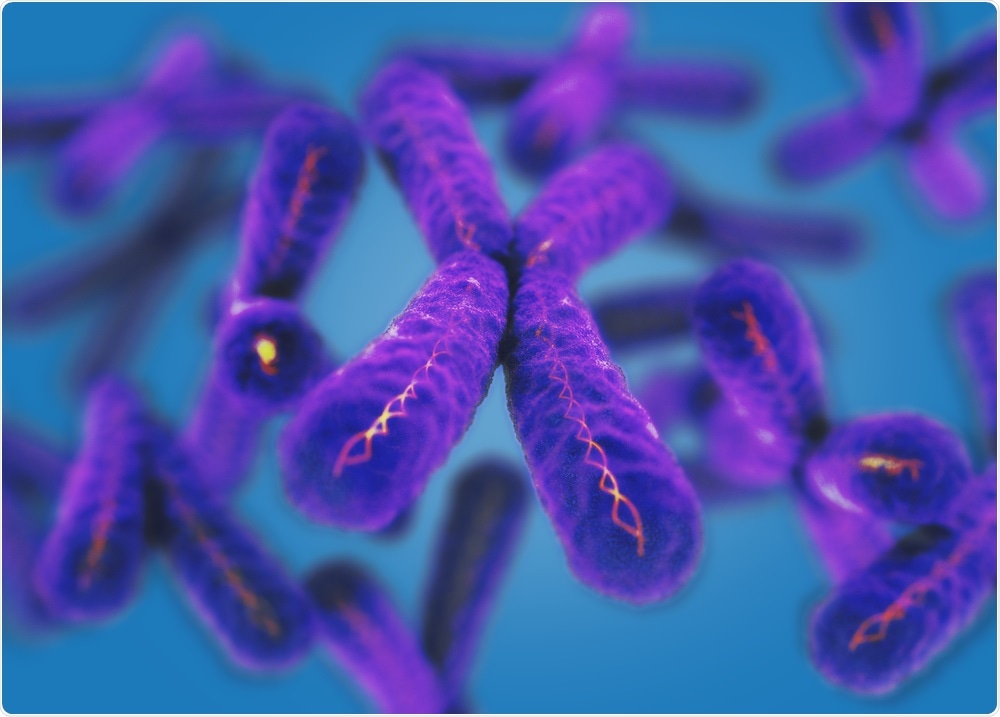
Researchers develop 3D map of the human genome
Researchers from the University of Illinois have developed a way of mapping the positions of genes within cells to understand more about how the genome is organized.
 Image Credit: Anatomy Insider / Shutterstock
Image Credit: Anatomy Insider / ShutterstockAs reported in the Journal of Cell biology, Yu Chen and colleagues have used a technique called tyramide signal amplification sequencing (TSA-Seq) to simultaneously measure the position of every gene from specific nuclear landmarks and build a 3D map of the genome’s arrangement.
Whether or not a gene is positioned close to the edge or the center of a nucleus can influence its activity and a gene’s location may therefore change during cell development or disease.
Although scientists can pinpoint the location of single genes using a microscope, simultaneously determining the position of all genes in this way is impossible.
Now, Chen and colleagues have described their use of the TSA-Seq technique, where an enzyme called horseradish peroxidase is directed to specific structures in the nucleus such as the nuclear lamina, which surrounds the nucleus, or the nuclear speckles in its center.
The enzyme produces a molecule called tyramide that can label any gene within its vicinity, with the DNA being more labelled the closer it is to the enzyme.
This means that on sequencing the DNA, researchers can determine the distance of each gene from the enzyme-tagged nuclear structure.
The team used the technique to look at leukemia cells and found that genes tended to be more active if they were positioned closer to the nuclear speckles rather than the nuclear lamina.
By simultaneously determining the position of nearby genes, Chen and colleagues were able to map entire sections of chromosomes that spiralled out from the edge of the nucleus towards the speckles in the center, which seemed to be hot spots for gene activity.
For example, changing a gene’s location so that it lies closer to a speckle could significantly increase its activity.
The researchers say that although the technique needs refining, they hope TSA-Seq could one day be used to trace the location of genes in other types of cells and to explore how the positions change during cell development or disease.
Source:
This article has been re-written from a press release originally published on EurekAlert.






















.png)












No hay comentarios:
Publicar un comentario